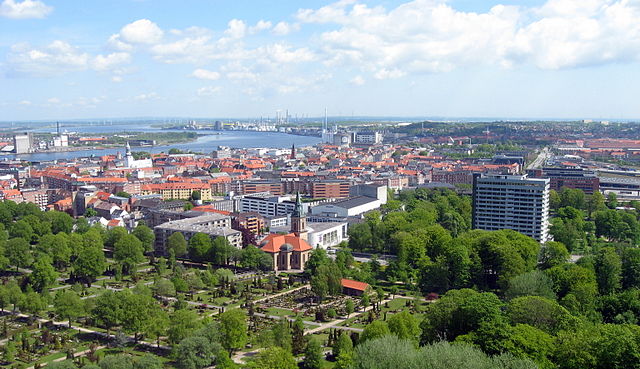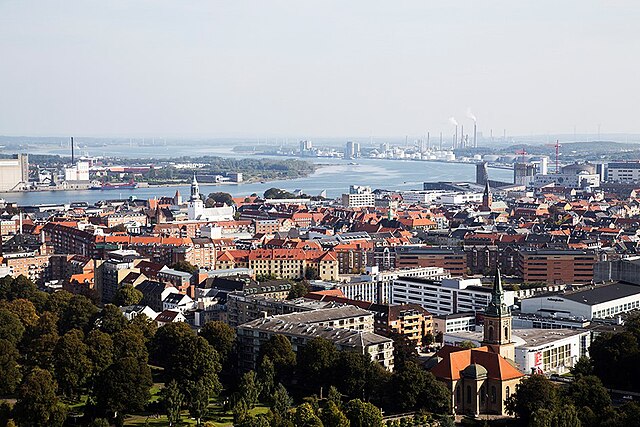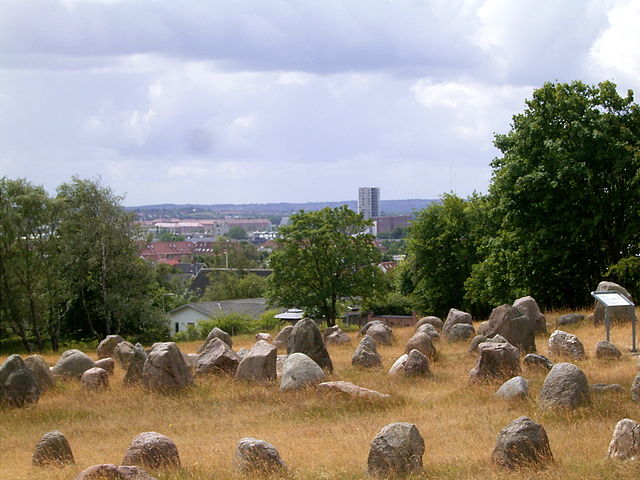Aalborg Municipality is a municipality in North Jutland Region on the Jutland peninsula in northern Denmark. The municipality straddles the Limfjord, the waterway which connects the North Sea and the Kattegat east-to-west, and which separates the main body of the Jutland peninsula from the island of Vendsyssel-Thy north-to-south. It has a land area of 1,143.99 km2 (441.70 sq mi) and a population of 222,571.
Aalborg Municipality
Aalborg or Ålborg is Denmark's fourth largest urban settlement with a population of 119,862 in the town proper and an urban population of 143,598. As of 1 July 2022, the Municipality of Aalborg had a population of 221,082, making it the third most populous in the country after the municipalities of Copenhagen (capital) and Aarhus. Eurostat and OECD have used a definition for the metropolitan area of Aalborg, which includes all municipalities in the province of North Jutland, with a total population of 594,323 as of 1 July 2022.
Panoramic view of Aalborg (September 2018)
Lindholm Høje
Execution of the rebel Skipper Clement in Viborg, 1536 (engraving by an unknown author, 1574)
Aalborg in the 1830s: painting of the old watermill by wine merchant Bock showing the mill pond fed from the Østerå





